“Reaping the Rewards” is a series focusing on finished products from crowdfunding campaigns. Today’s topic: the Spaceteam card game, an analog version of my favorite cooperative shouting app. The Spaceteam card game was originally Kickstarted in September 2015 and shipped to backers in January 2016. (I’m just really late in writing up the finished product!)
Note: This review is adapted from my original Kickstarter Tabletop Alert, but updated to reflect final components and rules.
At a glance: Spaceteam is for 3 to 6 players, ages 10 and up, and takes 5 minutes to play. It retails for $24.99 and is available online, or check with your local game store. The game can be played with younger children, but do note that it has purposely difficult-to-pronounce equipment so reading skills are a must. The NSFS Expansion allows you to have up to 9 players, but has a decidedly adult theme and is for 18 and up.

Components
- 24 Tool cards
- 45 Malfunction cards
- 15 Anomaly cards
- 6 Systems Go cards
- 1 five-minute sand timer
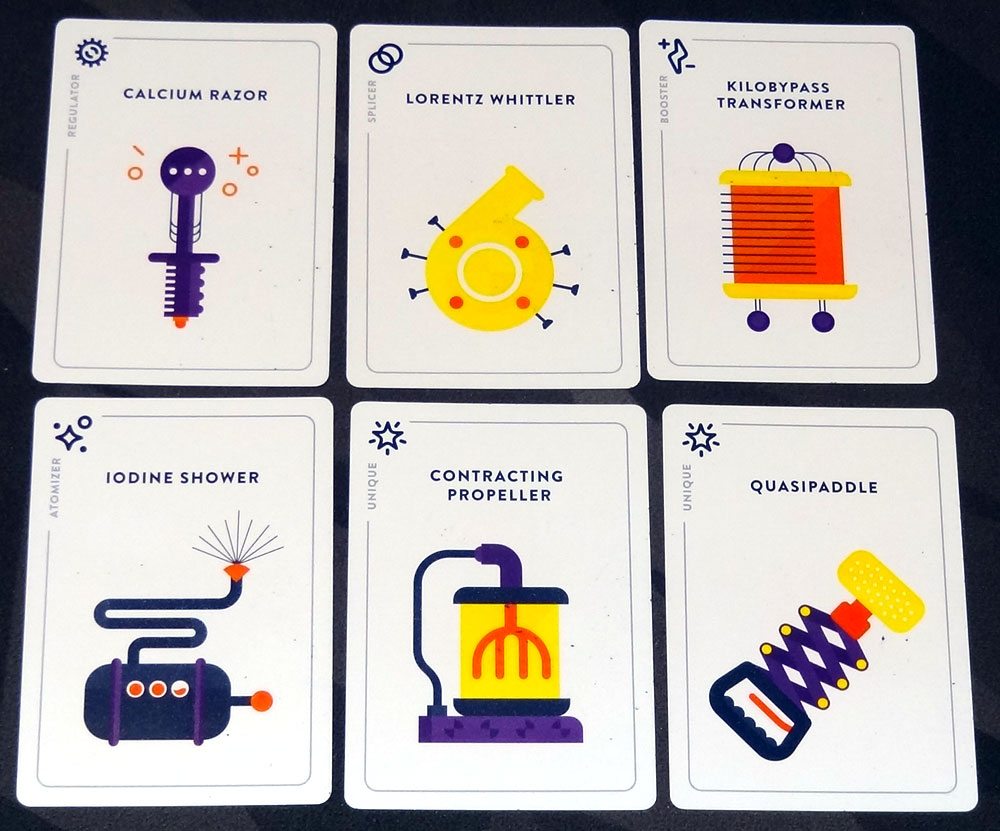
The cards have some sort of ridiculously slick coating on them—but it’s a feature, not a bug. Really. The game involves frantically passing cards around to each other to deal with malfunctions, and the fact that you can’t hold onto a bunch of them without dropping them is part of the challenge. The downside is that I have noticed that—after a year of wear—there are some scuff marks and scratches, some worse than others. I generally don’t sleeve my cards, but these cards get some pretty rough handling, so it may have been a good idea.

The illustrations on the cards are pretty nice—tools have appropriately complicated names, and there are really funny anomalies. The one thing I wish is that the names of the malfunctions were more obvious. There is some faint text on the left side of the malfunction cards that is reminiscent of the commands in the app: “Re-attach Unimanifold Dial” and “Reduce Backseat Driving” and so forth. But the text is so faint that most of the time you don’t even see it while you’re playing.
It’s nice to have a sand timer, but usually when I play I use a timer on my phone, because I find that it’s best to have an audible alert when time runs out—you’ll be so busy that it’s hard to keep an eye on a sand timer.
Overall, I really like the way the finished cards turned out, other than the wear issue.
How to Play
The object of the game is to uncover all 6 Systems Go cards before the five-minute timer runs out. The game does not have individual turns–everyone plays simultaneously.
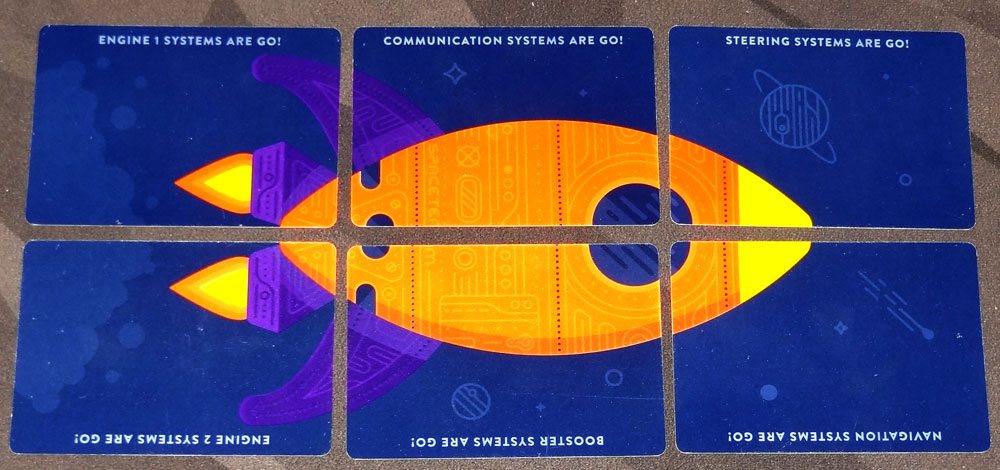
The Systems Go cards are six cards that form a picture of the spaceship—you’ll have to fix malfunctions and address anomalies in order to uncover these.
To set up, you’ll shuffle together a number of malfunction and anomaly cards together, based on the number of players and desired difficulty level. You’ll also include all 6 Goal cards. Then, divide up this malfunction deck into roughly equal piles. Shuffle the tool cards and divide these into roughly equal piles as well. Each player takes a pile of tools and a pile of malfunctions.
You hold the tools in your hand, and the stack of malfunctions goes on the table in front of you. When the timer starts, everyone flips over their entire stack of malfunctions so that they’re face-up, and starts to resolve them. As they’re resolved, you flip them face-down and reveal the next one.
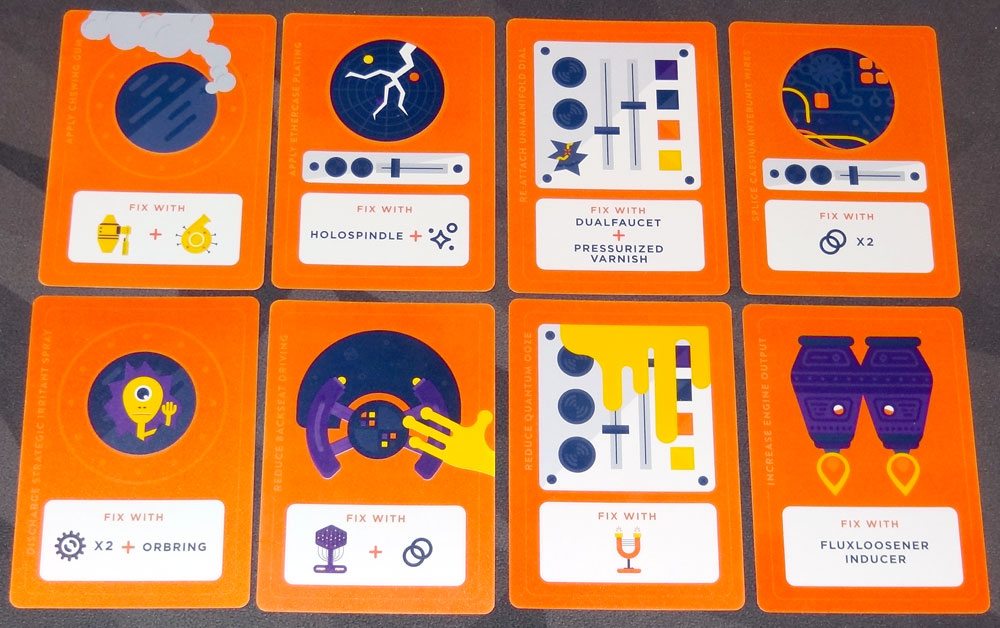
For a malfunction card, you’ll need 1 to 3 tools to fix it. If you have the tool you need, you play it on the table next to your malfunction stack. Otherwise, you’ll need to ask your teammates for it. Players may only pass tools to the players directly adjacent to them. If a tool category is listed on the card, then any card from that category can be used to fulfill that requirement. As soon as you have all the tools listed on a malfunction card played on the table, it is fixed. Flip the malfunction, and pick up all the tools back into your hand.
Note that some cards list the tools needed by name; some show images of the tools, and some show icons (indicating that a particular tool category is required).

Anomalies (formerly called “special malfunctions”) just do whatever they say. For instance, the Wormhole says everyone must change seats before continuing. Man Overboard prevents you from playing cards or speaking until the adjacent players grab your arms and pull you back onto the ship. There are various effects, and quite often require your teammates’ help to resolve.
Finally, if you expose a Systems Go card, that just gets played automatically to the center of the table. Shout out the text (“Navigation is Go!”) and place it in the center.
If your team assembles all 6 Systems Go cards before the timer runs out, you win! Otherwise, you die in a horrible space explosion and nobody can hear you scream about the Rotomist Container and Moonwhisk you needed.

The Verdict
Before I get into the card game, I’ll say up front that I really love the Spaceteam app. I forget when I was first introduced to it, but I love the crazy feeling of putting out fires all over a spaceship and it’s hard not to get caught up in the excitement when you play. In 2014 when designer Henry Smith ran a Kickstarter to fund his indie mobile games, I backed it and became a member of the Spaceteam Admiral’s Club.
I did meet Smith in person a couple years ago at XOXO and asked him if he’d ever considered a tabletop version of it, and we had a fun conversation about how it might work without the benefit of smartphones. So I was very excited when I learned that there was a card game in the works, and even more so when the team contacted GeekDad about trying out a prototype. Here’s the team behind the game: the concept was by Timothy Hutchings, with game design by Matthew Sissom and Tommy West. The illustrations are by Sergey Grigoryan. Elan Lee (of Exploding Kittens fame) and Henry Smith are both advisers on the project.

The prototype arrived on the weekend I was attending XOXO, so it seemed like a great time to break it out and give it a spin. I took it with me and played with a lot of different people over the weekend–people who had played the Spaceteam app and loved it, people who had heard of the app but had never played it, and people who had never heard of the app at all. Nearly everyone I played with loved the game and most people played multiple rounds. We played outside on picnic tables in 90-degree heat, we played where wind threatened to blow cards away, we played in a dimly-lit space filled with lots of other people playing other games (“just shout louder!”), and we played outside after dark when it got unexpectedly chilly. It was just that fun.
Those who had played the Spaceteam app were generally pleased with this adaptation. I admit that, even though I’d thought about a tabletop version myself, I was a little skeptical at first. But playing it really captures the feel of the app: you’re frantically shouting, worried about the amount of time you have left. Sometimes you’re stuck with the same instruction, wondering why your teammates haven’t passed you the right tool yet… and then realize you’ve been holding it in your hand the whole time.
Not everyone likes the anomalies—particularly the Robot anomaly that prohibits you from using your thumbs for the rest of the game—but I think they’re a big part of the fun, interrupting the malfunction-fixing and introducing a little more chaos to the mix. You can always decide ahead of time how many anomalies to add into the decks.
With the way the cards are set up, sometimes the Systems Go cards ended up close to the top of a stack or right after each other. It’s a little anticlimactic if the game ends in 30 seconds because all the Systems Go cards have been found. I’ve tried different setups depending on whether it’s someone’s first game or how long I want to spend setting things up. For instance, sometimes I separate out the decks first, and then make sure I shuffle at least one Systems Go card into each player’s deck—that way you know you’re guaranteed to get one. However, in that case, once you’ve found your Systems Go card, you know you can quit fixing your malfunctions. Once everyone knows the game, I think it’s more fun to have a random distribution, because everyone has to keep working until all six cards are found.
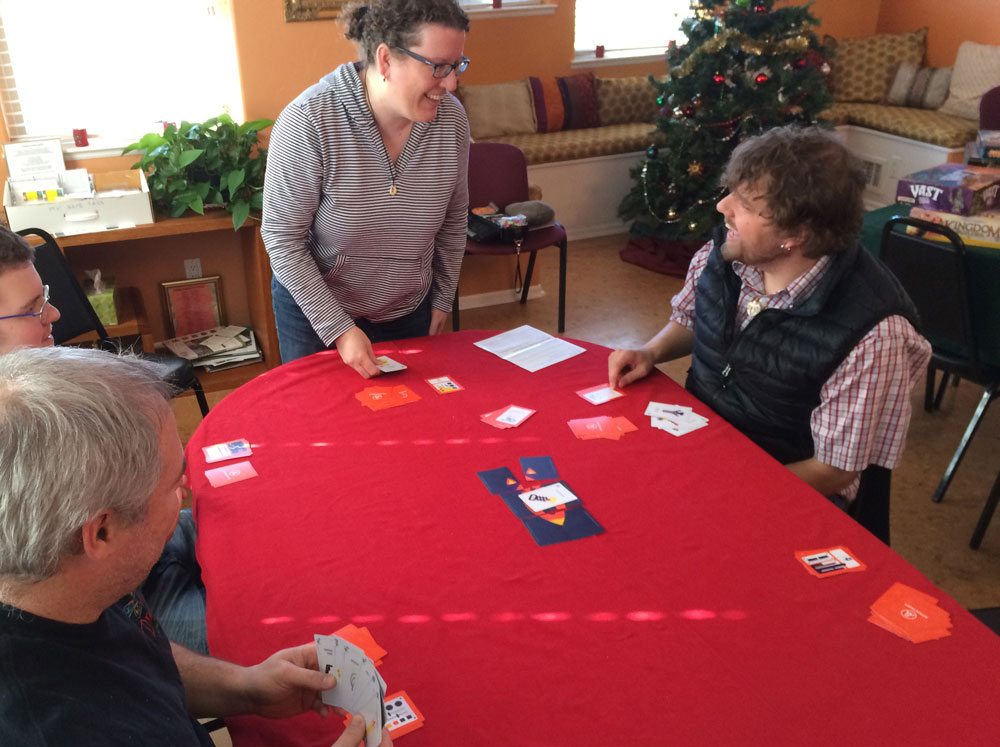
The tools can be hard to describe, so when your malfunction card only shows you a picture of it, you’ll have to describe it in a way that people know what you’re talking about. It gets pretty funny, when people are shouting things like “I need a yellow hair dryer thing!” “Does anyone have a glue gun?” If you play a lot, you’ll come to learn the names of the tools, though, so you’ll probably want to increase the difficulty level.
I have a copy of the NSFS (Not Safe For Space) Expansion, but I haven’t actually used it in play yet—largely because of the adult theme. It adds three new categories of tools—pleasurizers, inebriators, and anesthetizers—along with malfunctions and anomalies to go with those. I’ll show you a few of the tamer cards.
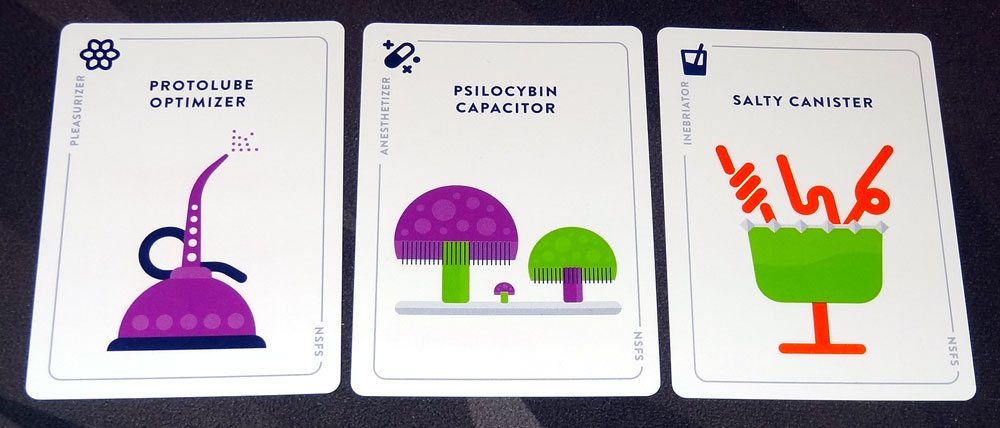
As before, the malfunction cards may call for tools by name, or categories, or show images. However, because many of these tools are actual things like mushrooms or bongs, it becomes a lot easier to describe a tool by its picture than with the “Cartesian Participle” and “Orbring” in the base game.

If you want a little bit of naughtiness in the game, the illustrations and names of the malfunctions can be pretty amusing—again, these are some of the milder cards, but you get the idea.

There is also another expansion in the works called the Triangulum Expansion, which will also add more tools, malfunctions, and anomalies to expand the base game to 9 players, but without the adult theme. They had a little trouble matching the colors of the base game so it has been delayed, but you can pre-order it here. I’m looking forward to that one, just to be able to mix up the tools and malfunctions a little more, even if I’m not playing with extra players.
I really love the Spaceteam card game. I think they did a fantastic job translating the app to card form, and it’s a really fun one to break out for a few rounds to get people warmed up. It made my 10×10 list in 2016 and will likely continue to get a lot of plays in the future. Spaceteam is frantic and fast-paced and very, very loud—which I know isn’t for everyone, but if you like speedy games and a bit of chaos, it’s hard to beat.
For more information, visit the Spaceteam site or order a copy from Amazon.
Disclosure: I received a review copy of this game.
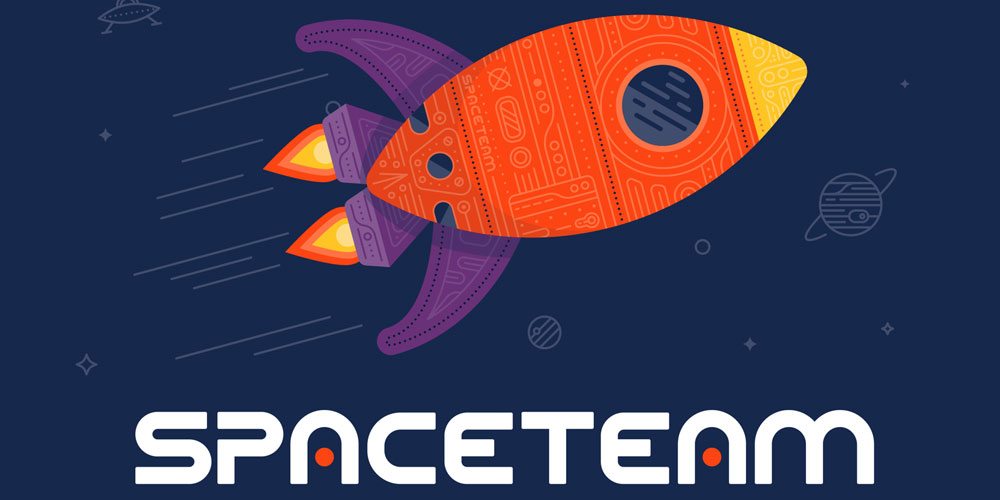
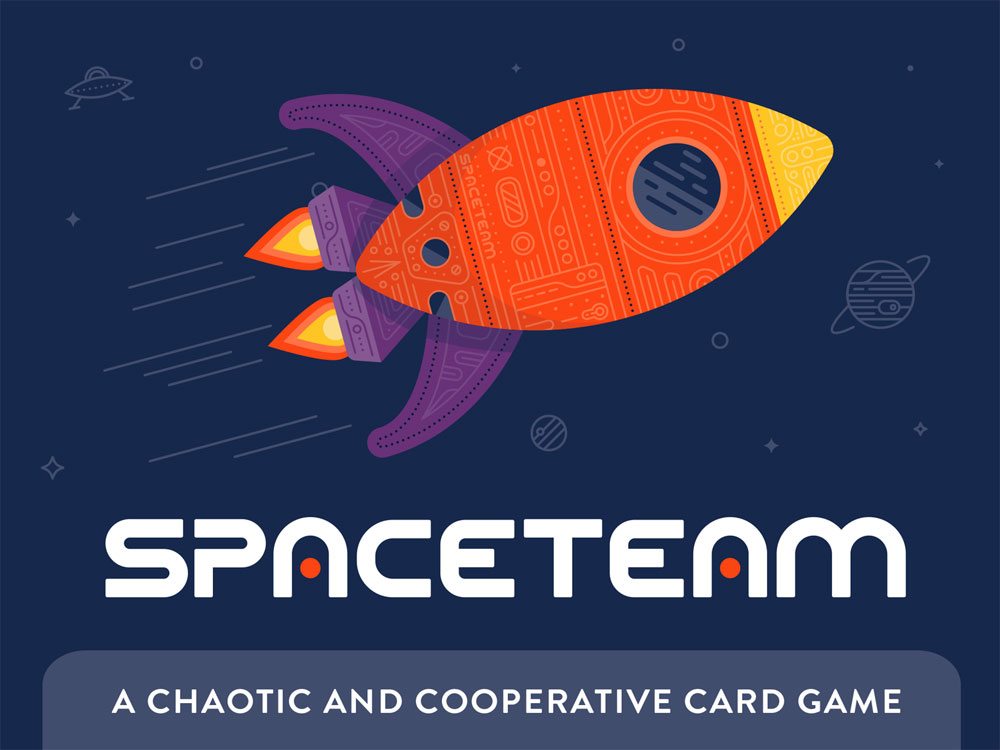

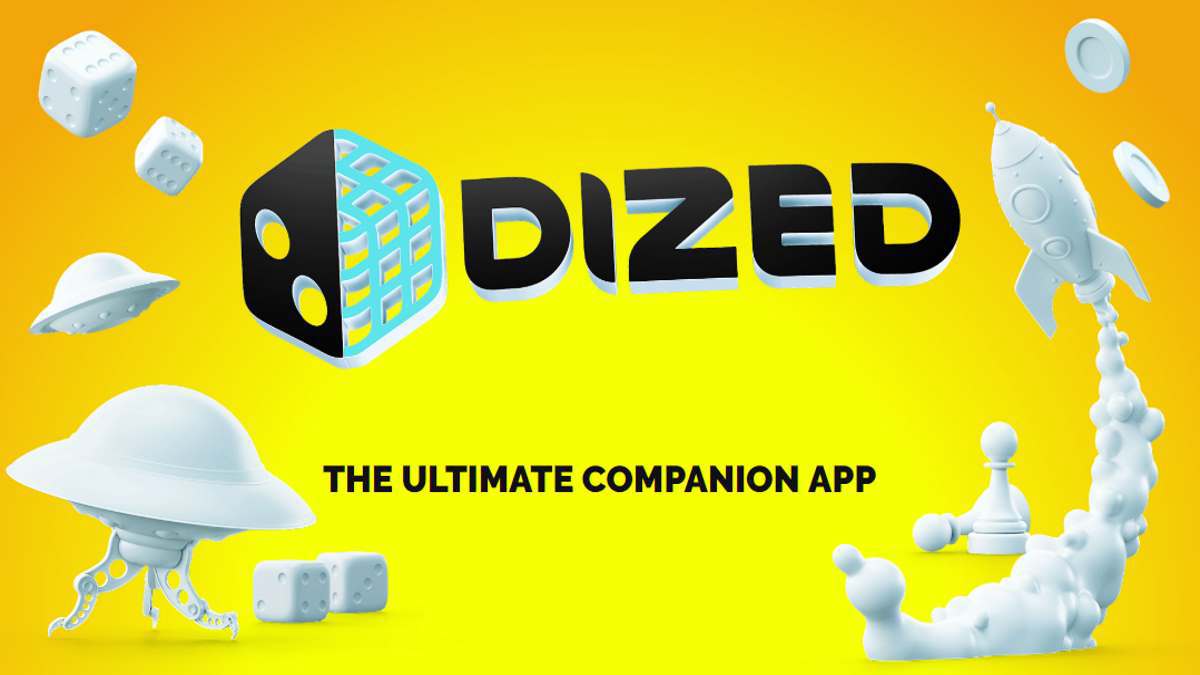


Good reveiew, and I’m glad that you touched on the yet-to-be-sent out expansion.
I backed it on kickstarter and have played it a few times. I feel the slickness of the cards to be an issue, because the cards can easily disappear. We had one person stuck on a malfunction for half the game because the card slid off the table, underneath the couch.
Everytime I ask my friends if they want to play this, I describe it as “Cooperative Yelling”. It’s a fun, fast-paced game that doesn’t really see heavy rotation among my friends, but when it does get played, everyone has a good time.
I play this game with my 3 year old twins by taking out all the cards with words and we play in sequence. They love finding the spaceship cards and they can find the tools they need by the pictures. We also play cards up on the table, so they can see them. Even with all these changes the game is fun and we all have a great time.
Also, spaceteam has a timer online that you can download. It adds a nice element of pressure while playing.